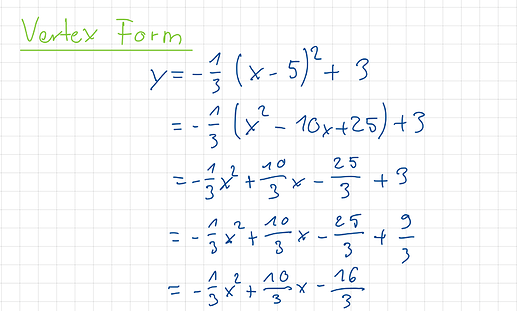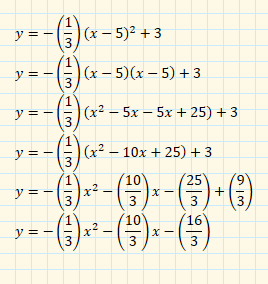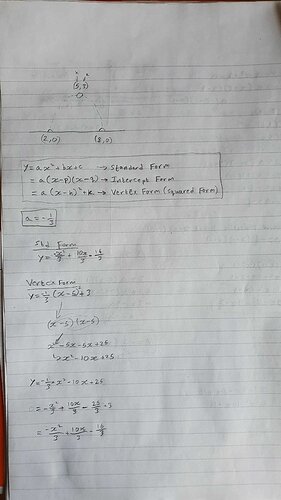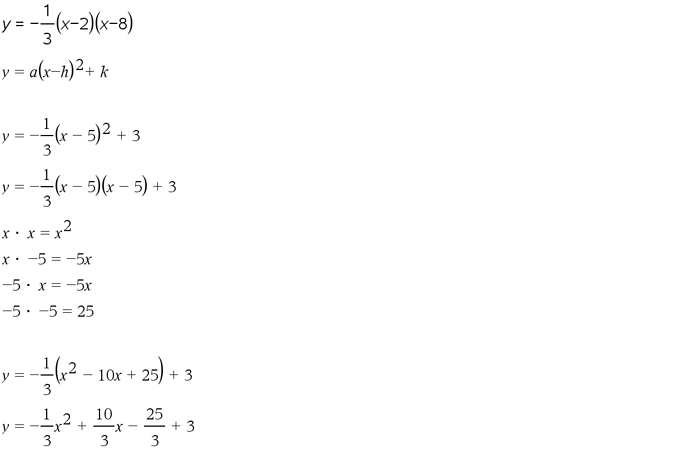In this lecture we were introduced to the vertex form, or squared form, of the quadratic equation.
This form is incredibly useful for quickly seeing where the vertex of the parabola is - hence it’s name.
For your challenge, find the equation in vertex form for the curve that runs through the points (2,0), (5,3), and (8,0).
In intercept form, this was y = -1/3(x - 2)(x - 8)
Remember that the answer will be in the form; y = a(x - h)^2 + k.
For a hint: You can take the ‘a’ from the other form of the equation.
Post your answers below and remember to use spoiler tags.







